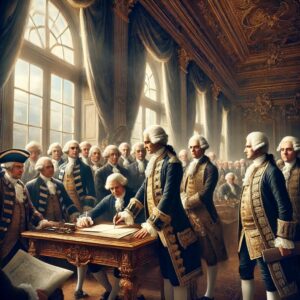The Treaty of Paris, signed in 1763, was a game-changer for North America. This historic agreement brought an end to the French and Indian War—known globally as the Seven Years’ War—and completely reshaped the balance of power on the continent. Britain emerged as the dominant force, France lost nearly all of its territory in North America, and Spain gained vast new lands. It was a turning point that set the stage for future conflicts, including the American Revolution.
Before the treaty, France, Britain, and Spain had been battling for control of North America. The French and Indian War, which lasted from 1754 to 1763, was part of a larger global struggle between these European powers. Britain and its American colonies fought against France and its Native American allies, clashing over valuable land and trade routes. By the end of the war, British forces had captured key French territories, including Canada and lands east of the Mississippi River. With France on the losing side, negotiations in Paris led to a massive territorial exchange.
Under the terms of the treaty, France gave up Canada and all lands east of the Mississippi to Britain, marking the end of French colonial rule in North America. Spain, which had joined the war late on France’s side, ceded Florida to Britain but received the vast Louisiana Territory in return. France was left with only a few Caribbean islands, keeping a small foothold but effectively ending its empire in mainland North America. For Britain, the victory seemed like a triumph, but governing its expanded territories would soon become a challenge.
While the Treaty of Paris 1763 redrew the map, it also planted the seeds of future unrest. Native American tribes, who had been allied with the French, resisted British control, leading to conflicts like Pontiac’s Rebellion. Meanwhile, British leaders, hoping to avoid further wars, issued the Proclamation of 1763, restricting colonial expansion west of the Appalachian Mountains. This frustrated American colonists, who had hoped to settle the newly acquired lands. The resentment over British policies and taxation in the years that followed would eventually spark the American Revolution.
The Treaty of Paris 1763 was more than just a diplomatic agreement—it was a turning point that reshaped North America’s future. By redrawing borders and shifting power, it set the stage for new alliances, conflicts, and revolutions. Though France may have lost its North American empire, the struggle for control of the continent was far from over.

